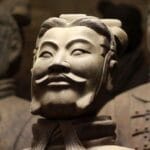The internet has opened doors to education, business, and global communication. Yet, it has also brought along unexpected issues, like the rise of “internet trolls.” These individuals aim to humiliate or deceive others by making inflammatory statements or spreading misinformation.
However, trolling is not a new phenomenon tied exclusively to the internet. Its roots trace back thousands of years, serving as a tactic in warfare, politics, art, and comedy. Throughout history, numerous famous and powerful figures have experienced trolling, and some have even engaged in it themselves. Let’s explore ten extraordinary examples of pre-internet trolling.
The Origin of Trolling
But how did these provocateurs and manipulators come to be known as “trolls”? It’s not directly related to the creatures of folklore. The term “trolling” originates from fishing. Trolling is when fishermen cast bait into the water and slowly drag it, mimicking the appearance of live prey. This is deceptive, like the “bait” trolls use online. They deliberately make exaggerated or false statements, or make claims they don’t believe, to provoke a reaction, often causing the target to feel bad.
Unlike fishing, which has a clear goal, trolls can have various motivations. For some, it’s just a harmless prank, but for others, it’s a way to cause real harm.
The Littlehampton Letters
The 2023 film, Wicked Little Letters, tells the true story of a small seaside town in England terrorized by anonymous, abusive letters. The letters, filled with obscene language, targeted the most respected residents of Littlehampton, West Sussex. One example says a sheep produced somebody’s home-baked cakes using its rear end.
Despite swearing being commonplace on social media today, this occurred in the 1920s. The scandal made national news and was debated in Parliament. The letters initially targeted Edith Swan and appeared to come from Rose Gooding, a neighbor she had a disagreement. Rose was jailed twice despite little evidence. Edith was eventually revealed as the perpetrator and convicted after being caught sending another letter.
Diogenes of Sinope
Diogenes of Sinope, or Diogenes the Cynic, offers an early example of trolling. Living in a barrel in Corinth during the 4th century BC, this philosopher was known for his offensive behavior. He ate loudly, disrupted Plato’s lectures, spat at passersby, and touched himself publicly. He also roamed the streets with a lantern in broad daylight, claiming he was “looking for an honest man.”
Interestingly, when asked to name the most beautiful thing in the world, Diogenes responded with “freedom of speech,” a principle that internet trolls often invoke to justify questionable behavior.
Niccolò Machiavelli
Trolling and politics often go hand in hand. Niccolò Machiavelli included methods for making political enemies look foolish in The Prince, his guide to gaining and maintaining power. Some believe the book was a trick to undermine Lorenzo de’ Medici.
Machiavelli’s advice appeared helpful but might have been designed to inspire hatred of the leader. Cardinal Reginald Pole believed the book was “like a drug that causes princes to go mad.” Machiavelli aimed to bring down the Medicis who fired, imprisoned, and tortured him.
King Louis XVI and Marie Antoinette
Trolling can lead to severe consequences. In the court of King Louis XVI of France, it may have contributed to their downfall. The king’s brothers, the Comte de Provence and the Comte de Artois, spread rumors about Louis and Marie Antoinette.
They questioned Louis’s sexual ability, leading to the claim that Marie Antoinette had an affair with Artois. After the birth of Princess Marie-Thérèse, the Comte de Provence questioned her parentage during her baptism. These rumors damaged the French monarchy’s reputation, contributing to the French Revolution.
Napoleon
An aggressive, short person is often said to possess a “Napoleon complex,” named after Napoleon, who was supposedly short. At 5’7″, Napoleon was slightly shorter than average for today but taller than most Frenchmen during his lifetime.
The perception stemmed from British wartime propaganda that focused on his height through cartoons and pamphlets. Napoleon considered this a “deliberate provocation” and asked for censorship, which amplified the trolling. After his defeat at Waterloo, Napoleon claimed that the British political cartoonist James Gillray “did more than all the armies of Europe to bring me down.”
Ian Fleming and Operation Mincemeat
Misinformation is a key weapon for trolls, with one of history’s greatest misinformation campaigns conceived by James Bond author Ian Fleming. Fleming devised Operation Mincemeat to convince the Axis powers that the Allies would invade Greece instead of Sicily. A dead homeless man, dressed as a British military courier, was placed at sea off the coast of Spain, a region filled with Nazi spies. The body carried a letter marked “PERSONAL AND MOST SECRET,” detailing the false plans for Greece.
The ruse worked, leading Hitler to shift 90,000 soldiers to Greece. This aided in the Allied invasion of Sicily, the downfall of Mussolini, and pushed the Germans back.
George Washington
George Washington faced media trolling from within his own country. Benjamin Franklin Bache, a newspaper publisher, criticized Washington and printed libelous accusations against him, often sourced from Washington’s rivals.
Bache resented Washington’s refusal to grant him and other prominent figures the power they felt they deserved. He criticized the president at every opportunity. When Washington remained neutral during the French Revolution to protect the young nation’s reputation, Bache accused him of betraying allies. Bache published forged documents to defame the president.
Merde d’Artiste
Italian artist Piero Manzoni believed that the art world was overly gullible, with collectors willing to pay high prices for anything with an artist’s signature. In 1961, he trolled the art community by filling 90 tins with his own feces and selling them at the price of gold. They actually sold for thousands of dollars.
To extend the prank, a collaborator revealed in 2007 that the tins did not contain feces, but plaster.
Haydn’s Musical Joke
Even classical music has playful elements. Joseph Haydn, an 18th-century Austrian composer, wrote musical jokes that tricked his audiences. The ending of his string quartet “Opus 33 Number 2,” subtitled “The Joke,” involves long pauses and false endings.
Haydn prompted the audience to clap at the wrong times, repeating the trick several times. The piece ends abruptly, leaving the audience unsure of when to applaud. While not a laugh-out-loud joke, it has confused audiences for centuries.
From ancient philosophers to art world provocateurs, trolling has a long and varied history. These examples demonstrate that the desire to provoke, mislead, or simply stir things up is not unique to the digital age. It’s a timeless human characteristic.
What do you think about these historical trolls? Leave your comment below!










